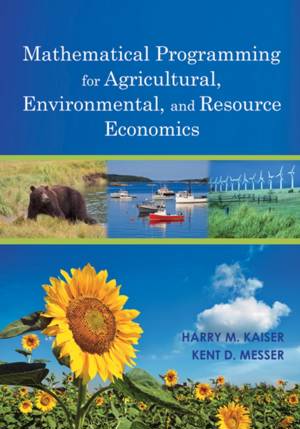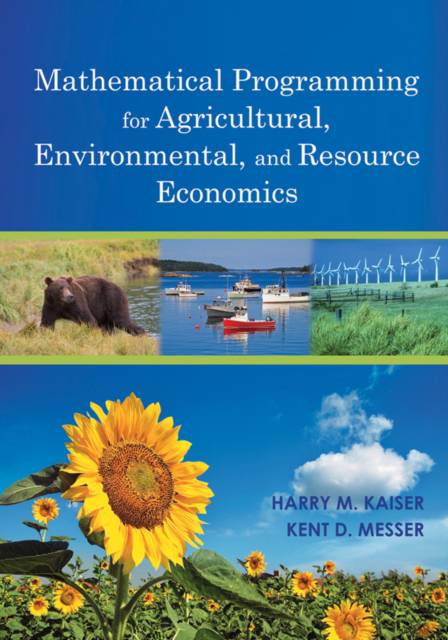
- Afhalen na 1 uur in een winkel met voorraad
- Gratis thuislevering in België vanaf € 30
- Ruim aanbod met 7 miljoen producten
- Afhalen na 1 uur in een winkel met voorraad
- Gratis thuislevering in België vanaf € 30
- Ruim aanbod met 7 miljoen producten
Zoeken
Mathematical Programming for Agricultural, Environmental, and Resource Economics
Harry M Kaiser, Kent D Messer
Hardcover | Engels
€ 181,95
+ 363 punten
Omschrijving
Mathematical Programming Models for Agriculture, Environmental, and Resource Economics provides a comprehensive overview of mathematical programming models and their applications to real world and important problems confronting agricultural, environmental, and resource economists. Unlike most mathematical programming books, the principal focus of this text is on applications of these techniques and models to the fields of agricultural, environmental, and resource economics. The three fundamental goals of the book are to provide the reader with: (1) a level of background sufficient to apply mathematical programming techniques to real world policy and business to conduct solid research and analysis, (2) a variety of applications of mathematical programming to important problems in the areas of agricultural, environmental, and resource economics, and (3) a firm foundation for preparation to more advanced, Ph.D. level books on linear and/or nonlinear programming. Despite its introductory nature, the text places significant emphasis on real world applications of mathematical programming to decision problems. A wide array of examples and case studies are used to convey the various programming techniques available to decision analysts.
Specificaties
Betrokkenen
- Auteur(s):
- Uitgeverij:
Inhoud
- Aantal bladzijden:
- 494
- Taal:
- Engels
Eigenschappen
- Productcode (EAN):
- 9780470599365
- Verschijningsdatum:
- 18/01/2012
- Uitvoering:
- Hardcover
- Formaat:
- Ongenaaid / garenloos gebonden
- Afmetingen:
- 180 mm x 254 mm
- Gewicht:
- 879 g

Alleen bij Standaard Boekhandel
+ 363 punten op je klantenkaart van Standaard Boekhandel
Beoordelingen
We publiceren alleen reviews die voldoen aan de voorwaarden voor reviews. Bekijk onze voorwaarden voor reviews.











